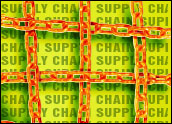
RFID initiatives introduced by the Department of Defense and private sector providers such asSavi Technology or Boeing are driving greater use of the technology in the aerospace and defense industries.
Unlike Wal-Mart’s RFID initiative in the consumer goods space, though, the Department of Defense’sprograms are much more collaborative in nature — and far less overhyped, saidABI Research director Michael Liard.
“Wal-Mart is taking the proverbial gun and putting it to its suppliers’ heads to drive compliance,” he told CRM Buyer. “DoD, meanwhile, is focusing on collaborating with its suppliers, even helping some financially, in order to get them to meet their requirements.”
In other words, it’s an entirely different spirit of compliance and one that will reap rewards, Liard projects. By 2011, the RFID industry is expected to realize revenues in excess of US$2 billion from aerospace and defense, according to a new ABI report.
Targeting MRO
In particular, Liard’s firm identifies MRO — maintenance, repair and overhaul — as ripe for savings and revenue opportunity.
“A&D companies have evolved a new supply chain equation: maintenance strategy plus supply side strategy equals supply chain strategy,” Liard said. “RFID can fulfill many MRO event requirements by enabling real-time track and trace and unique identification.”
This concept stretches across two core functional buckets, he explained: supply chain strategies andasset management activities. Like the savings expected under Wal-Mart’s RFID initiatives, the aerospace and defense industries are expected to benefit from projects and technology that combine real-time case and pallet tracking, better spare parts and reusable asset management, and the larger requirements in the DoD mandate.
Integrated MRO Supply Line
An integrated MRO strategy using RFID tagging technology can streamline such tasks as locating parts, tools and materials, Liard said, as well as facilitate preparation of the significant amount of documentationrequired to meet regulations in the aerospace and defense industries.
Given the one-off equipment maintenance and supply chain management focus of most A&D organizations, an integrated MRO supply chain strategy with linkages between in-line equipment performance and supplier capability is critical, Liard concludes in the ABI report.
“An integrated MRO supply chain can improve service performance in a manufacturer’s storeroom bysimplifying inventory, purchasing, and other business processes,” it states. “Integrated supply allows the centralization of all sourcing, procurement, receiving, internal distribution and service to onesupplier. The full benefit of integrated supply is achieved when all MRO supply chain functions areoutsourced, thereby allowing a plant to better focus on its core competencies.”





















































